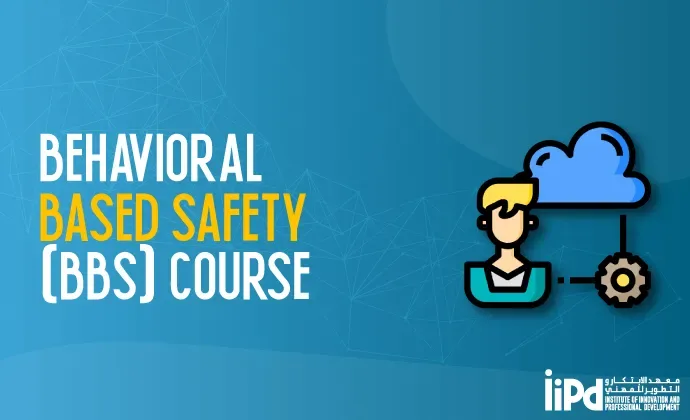
Course Details
Cultivate a Culture of Safety: Behavioral-Based Safety Course
Empower yourself and your team with the Behavioral Based Safety (BBS) course offered by IIPD Global. This program equips participants with the knowledge and tools to proactively foster a safer work environment in Riyadh and beyond.
Focus on Human Behavior for Safety and Success
The course delves into the crucial role of human behavior in workplace safety. You'll gain a deeper understanding of the factors influencing safety practices, including:
- Attitudes towards safety procedures and risk-taking.
- Perceptions of the workplace environment and safety protocols.
- Motivation to adhere to safety guidelines and best practices.
- Building a Proactive Safety Culture
By recognizing the connection between these factors and safety outcomes, participants learn to:
- Identify critical safety behaviors: Pinpoint the actions and habits essential for a safe work environment.
- Implement behavior modification techniques: Discover strategies to encourage and reinforce positive safety habits within your team.
- Promote a culture of safety: Learn how to create a work environment where safety is a shared value and a top priority.
Module 1: Introduction to Behavioral-Based Safety
- Understanding the concept of BBS and its significance in workplace safety
- Historical development and evolution of BBS
- Differentiating BBS from traditional safety approaches
- Key benefits and challenges of implementing BBS in organizations
Module 2: Human Behavior and Safety
- Human factors and their impact on safety performance
- The role of attitudes, perception, and motivation in shaping safety behaviors
- Cognitive biases and their implications for decision-making in safety-critical situations
- The psychology of risk-taking behavior and its influence on workplace safety
Module 3: BBS Principles and Components
- Basic principles and core components of Behavioral Based Safety
- Setting safety goals and objectives for the BBS program
- Establishing safety observation and feedback processes
- Identifying critical safety behaviors and their measurement metrics
Module 4: Conducting Safety Observations
- Techniques for conducting effective safety observations
- Data collection methods and tools
- Developing observation checklists and rating scales
- Handling feedback and ensuring non-punitive reporting
Module 5: Behavioral Analysis and Interventions
- Analyzing observed safety behaviors and their root causes
- Identifying reinforcement strategies to encourage safe behaviors
- Implementing behavior modification techniques
- Addressing resistance to change in safety practices
Module 6: Communication and Training in BBS
- Effective communication strategies for promoting safety awareness
- Conducting BBS training programs for employees and supervisors
- Engaging leadership in the BBS process and gaining their support
- Evaluating the effectiveness of BBS training initiatives
Module 7: Data Analysis and Continuous Improvement
- Analyzing BBS data to measure safety performance and progress
- Developing action plans based on data insights
- Incorporating lessons learned into the BBS program
- Continuous improvement and sustaining a proactive safety culture
Module 8: Integrating BBS with Existing Safety Programs
- Integrating BBS with other safety management systems
- Complementing BBS with hazard identification and risk assessment processes
- Enhancing incident investigation and reporting through BBS insights
Module 9: BBS Implementation and Rollout
- A step-by-step approach to implementing BBS in an organization
- Overcoming common challenges during BBS rollout
- Establishing a BBS steering committee for ongoing support and monitoring
Module 10: BBS Evaluation and Performance Metrics
- Key performance indicators for measuring BBS effectiveness
- Conducting BBS program evaluations and audits
- Benchmarking BBS performance with industry standards
Enroll Today and Invest in a Safer Future
The BBS course equips you with the skills to make a real difference. By empowering employees to take ownership of their safety and the safety of their colleagues, you can cultivate a proactive safety culture that benefits everyone. Enroll today and make safety a top priority in your organization!








